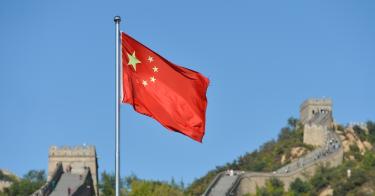In the United States, Congress often leans ahead of the executive branch on U.S.-Taiwan relations. But during President Tsai Ing-wen’s recent swing through New York City, as I listened to Congressmen calling for an independent Taiwan, I couldn’t help notice something new in the air.
It was the feeling of possibility.
The strategic context for the U.S.-China relationship is changing. As a result, the formula upon which the relationship rests — America’s "one China" policy — is at greater risk than at any time since Washington’s formal recognition of the PRC in 1979.
As readers know well, America’s China policy has its roots in the Presidency of Richard Nixon. The U.S. interest then was very clear. Nixon wanted Beijing’s help in extricating the U.S. from the Vietnam War on face-saving terms and in balancing the power of the Soviet Union. In the event, the U.S. failed to leave Vietnam on honorable basis. It and China did, however, develop a common interest in countering the Soviet Union that held for most of the next two decades.
Then in 1989, in close succession, the PLA massacred protestors in Tiananmen Square and the Berlin Wall fell. The former fueled outrage in Congress and the latter stripped U.S.-China relations of their strategic purpose.
Only George H.W. Bush prevented a collapse in the relationship. By virtue of public trust in his leadership and the constitutional powers granted his office, he preserved the U.S.-China relationship long enough for its rationale to be recast.
Bush’s own strategic offering was less precise than Nixon’s. It boiled down to the fact that China was a big country and that it needed to be engaged for the sake of an amorphous global stability. He also believed in the politically transformative impact of commercial engagement, which he thought, even in the aftermath of Tiananmen, was having its predicted positive impact.
It was not an entirely compelling vision, but it did the trick.
During the 1990s, over the course of several Congressional battles — not least of which concerned annual renewal of China’s most favored nation (MFN) trade status — the vision evolved. By 2000, when Congress approved MFN status for China on a permanent basis, U.S.-China relations were less about geopolitical stability and more about business. As for predictions that free market exchange would lead to Chinese political reform, not only did they endure, they served as vital cover for Congressmen uncomfortable with an argument built solely around commercial access.
Proponents of engagement had prevailed.
But as Heritage Foundation founder Ed Feulner is fond of saying, there are no “permanent” victories in Washington.
Beginning in the late 2000s, the economic underpinnings of U.S.-China relations began to loosen — a lagging effect of China’s turn away from market reform. Over time, American businesses grew bearish. The interest in the market that remains today — and it is significant — is no longer enough to mobilize them against anti-China sentiment.
Meanwhile, the idea that Chinese prosperity and ties to global markets would bring democratic reform has proven to be exactly what journalist Jim Mann famously termed it in 2007, a “fantasy.”
Over this period, conflicting interests between the U.S. and China have intensified. From the South China Sea, East China Sea, and human rights to Made in China 2025, the Huawei security challenge and the trade war, there is far more dividing the U.S. and China today than bringing it together.
What proponents of the diplomatic status quo in U.S.-China relations are left with is a defensive case, breaking from which would essentially isolate the U.S. It is not the 1960s. If the U.S. were to discard its one China policy, no country of significance would follow. Indeed, for the sake of their own economic ties, many would side with China.
I can say from experience that this is a tough sell. Washington is not in much of a mood lately to consider its limitations.
Of course, there is also the connection between serviceable U.S.-China relations (which is impossible outside the three communiques) and peace. This is the idea that a turnover in U.S. policy could precipitate armed conflict between the U.S. and China. But this, too, is a stretch for many policy makers.
Finally and crucially, the U.S. does not have a President that is making either case, or any other for close U.S.-China relations. Right or wrong, the Trump administration’s strategy for China is exclusively about rivalry.
All of this provides an opportunity for the most vocal friends of Taiwan to dream big. It’s not that calls from Congressmen for “one China, one Taiwan” are new. It’s that the status quo is losing its appeal. So unless a convincing argument can be found for America’s "one China" policy and an American President makes it, Congressional calls for an independent Taiwan might ultimately win over Washington.
This piece originally appeared in The Taipei Times



